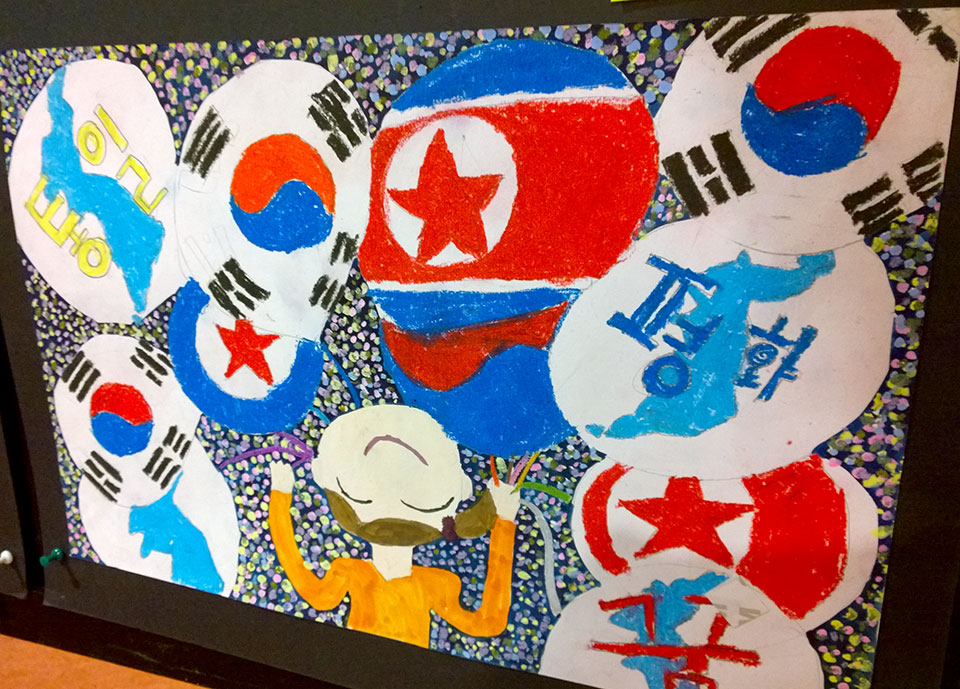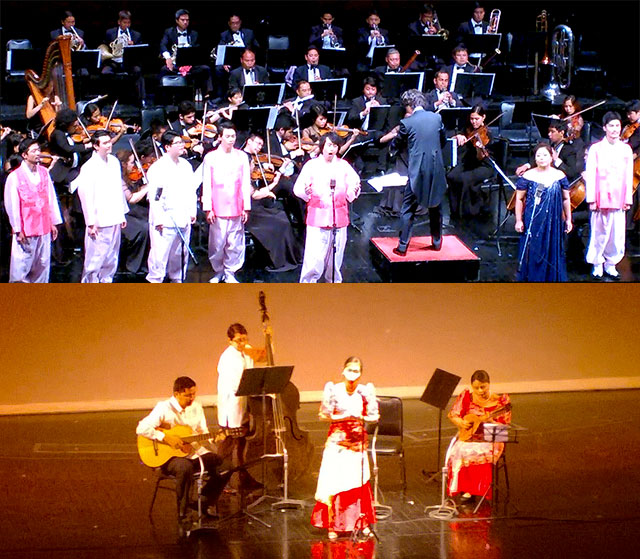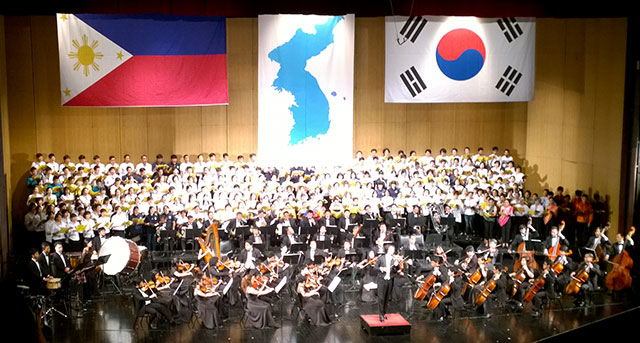Filtered By: Lifestyle
Lifestyle
A concert for the unification of Korea
Text and photos by ANALYN PEREZ, GMA News

Artwork by young people wishing for a united Korea are on display at the CCP Main Theater Gallery.
But the dream of a unified nation lives on, as shown by the Concert for the Peaceful Unification of the Korean Peninsula at the Cultural Center of the Philippines last October 9, a joint initiative by the Korean Cultural Center and the Korean Women’s Association in the Philippines for the benefit of the Yolanda survivors in Visayas and the families of North Korean defectors.
This event was done in commemoration of Hangul Day, a national holiday in South Korea marking the day the Korean alphabet was created more than 500 years ago. Three languages were spoken at the event: Korean, Tagalog, and English. But it was music that was the universal language that conveyed the message of unity.
From Mount Kumgang to Pasig River

Remembering the good old days: the Korean Countertenor Ensemble and soprano Park Min-Joung sing about Mount Kumgang (top) and the Sidhaya Rondalla perform 'Mutya ng Pasig' (below).
Kumgang, close to the border between the two Koreas, symbolizes the potential in the unification of Korea, with economic projects and family reunions held in the area.
Soprano Park Min-Joung and the Korean Countertenor Ensemble sang about the Korean mountain, while the Sidhaya Rondalla performed “Mutya ng Pasig,” emphasizing the face that these two geographical features have been the subject of art for hundreds of years.
The concert continued this theme of looking back at the history of both countries before World War II, continuing to the aftermath years. Conducting the orchestra was multi-awarded Korean conductor Lee June.
The diversity of Philippine languages was communicated through acapella by the UE Polyphonics, who sang the folk songs “Nonoy Inkod sa Bato” (Bicolano), “Koyu No Te Bulul” (T’boli) “Bahay Kubo” (Tagalog)
There were also ethereal performances of Korean folk songs “Going Home” accompanied by daegeum (flute) player Lee Joo-Yeon, followed by the Korean Countertenor Ensemble’s medley of “Barley Field”, “Tomb Wood”, and “New Arirang.”

Traditional P’ansori storytelling accompanied by the gayagum and a janggu drum.
Capping the show was a performance of "Symphonic Fantasia Korea" by the Manila Symphony Orchestra and the Grand United Chorus, featuring the KCC Dream Choir.
One Korea
The grand finale was a masterpiece by Ahn Ik-Tae, a composer who has given the Aegukga (South Korea's national anthem) a beat of its own.

The Grand United Chorus with the Manila Symphony Orchestra.
While the grand orchestra choir was singing “Aegukga,” conductor Lee June faced the audience, and the Koreans in the seats added their voices in singing the national anthem. Powerful patriotism and a strong hope for the future of a unified Korea drew a standing ovation from both Filipinos and Koreans. Hopefully someday the desire behind the concert can be achieved. — BM, GMA News
Tags: southkorea, koreanculturalcenter
More Videos
Most Popular




